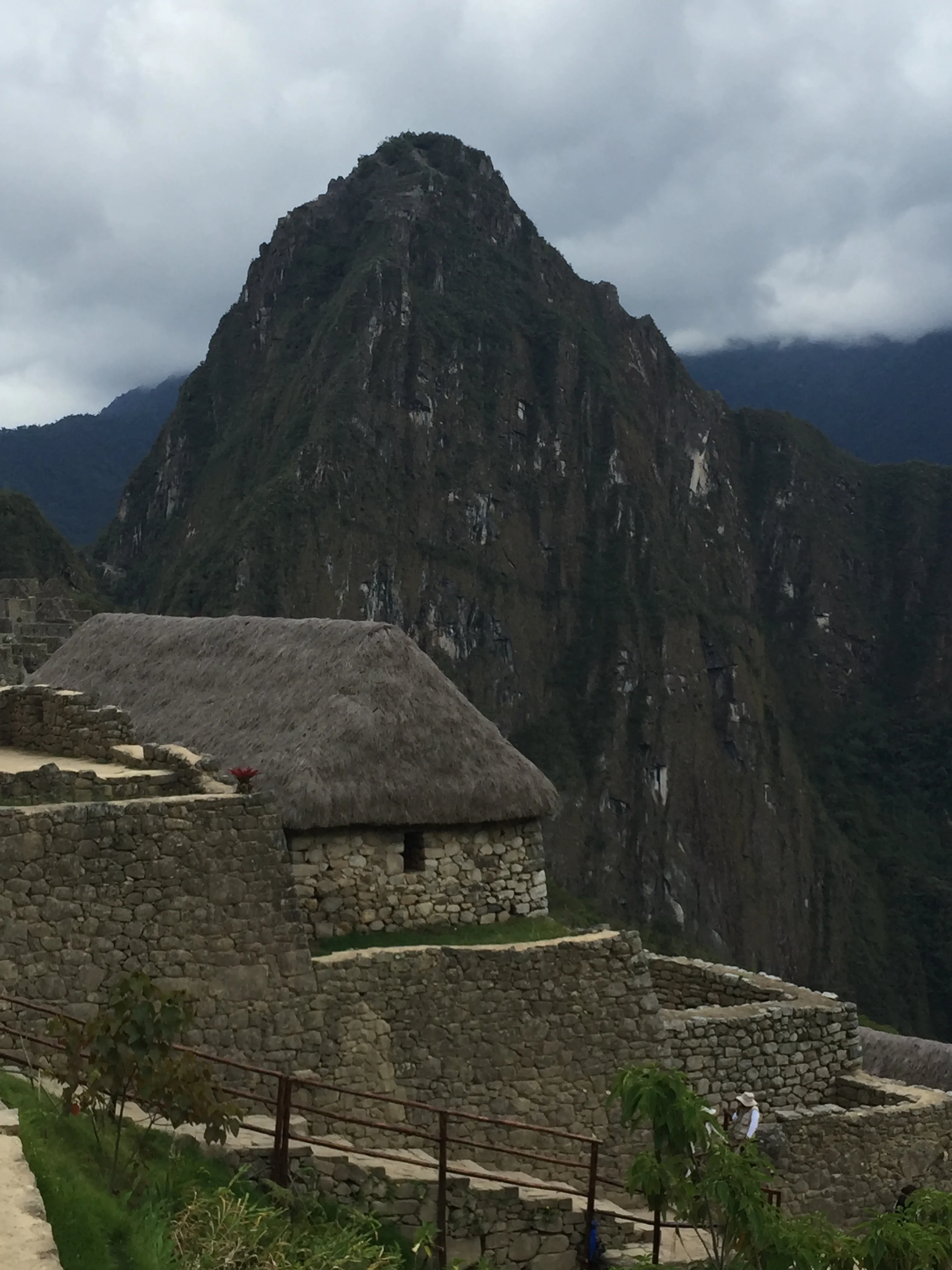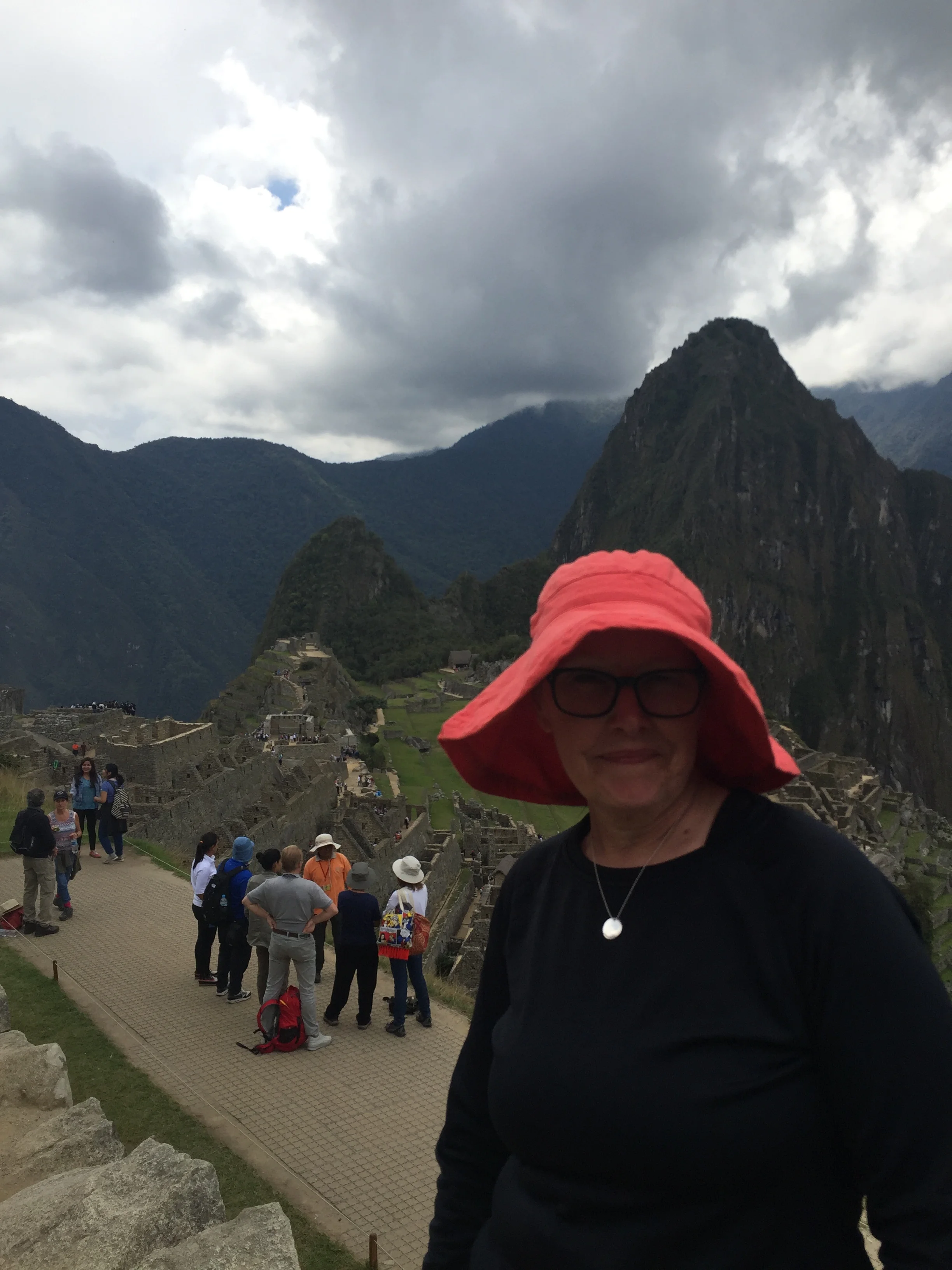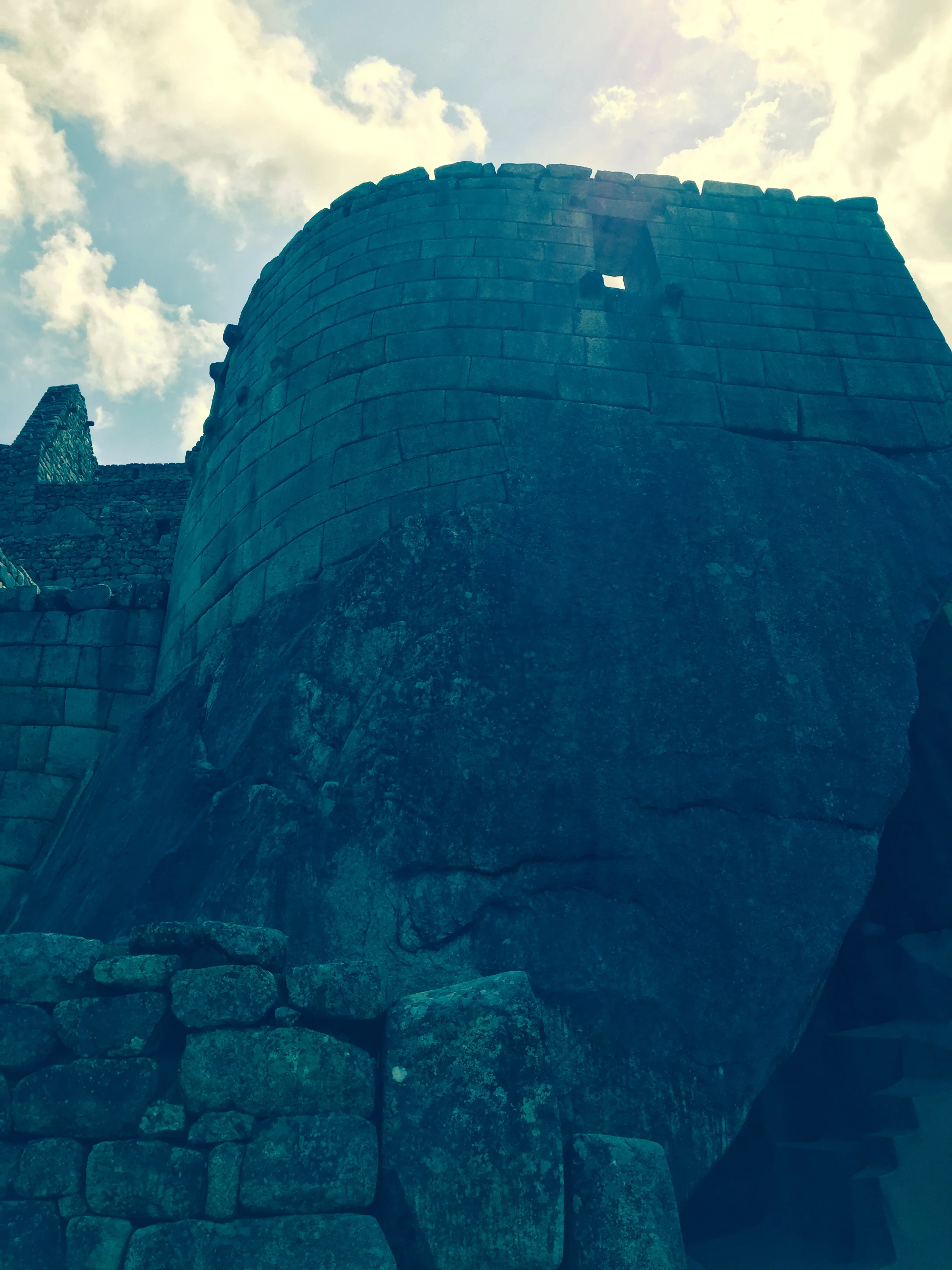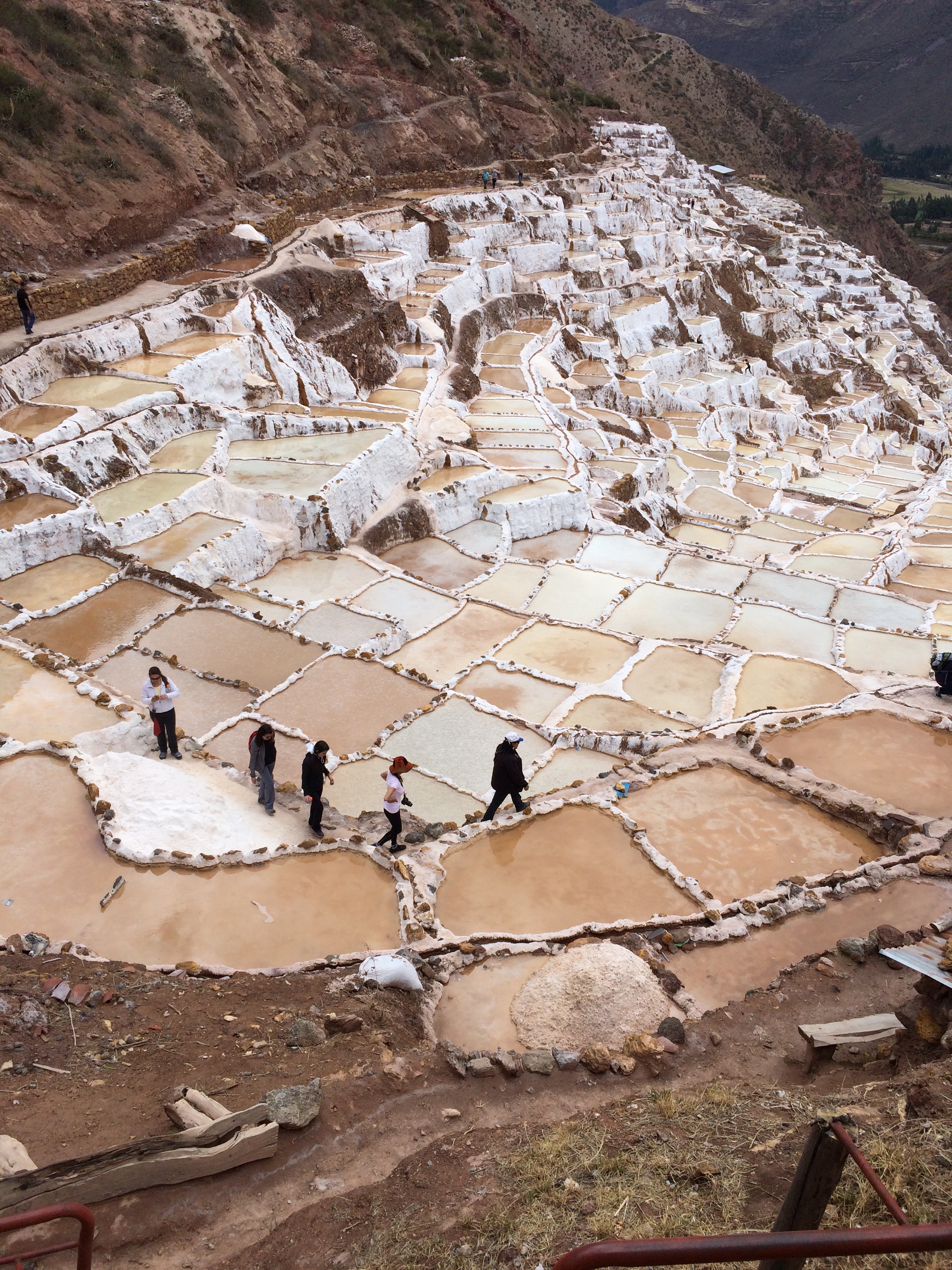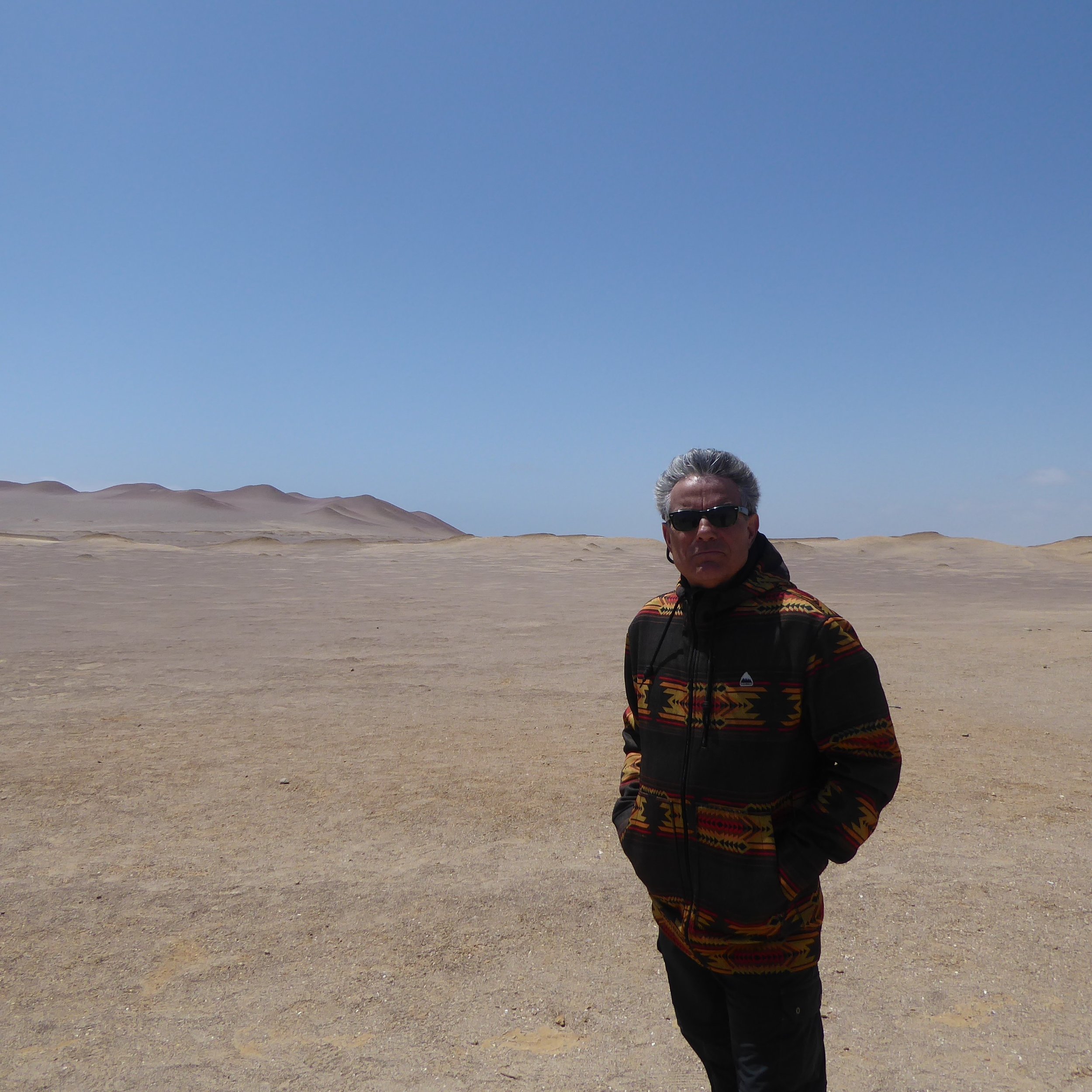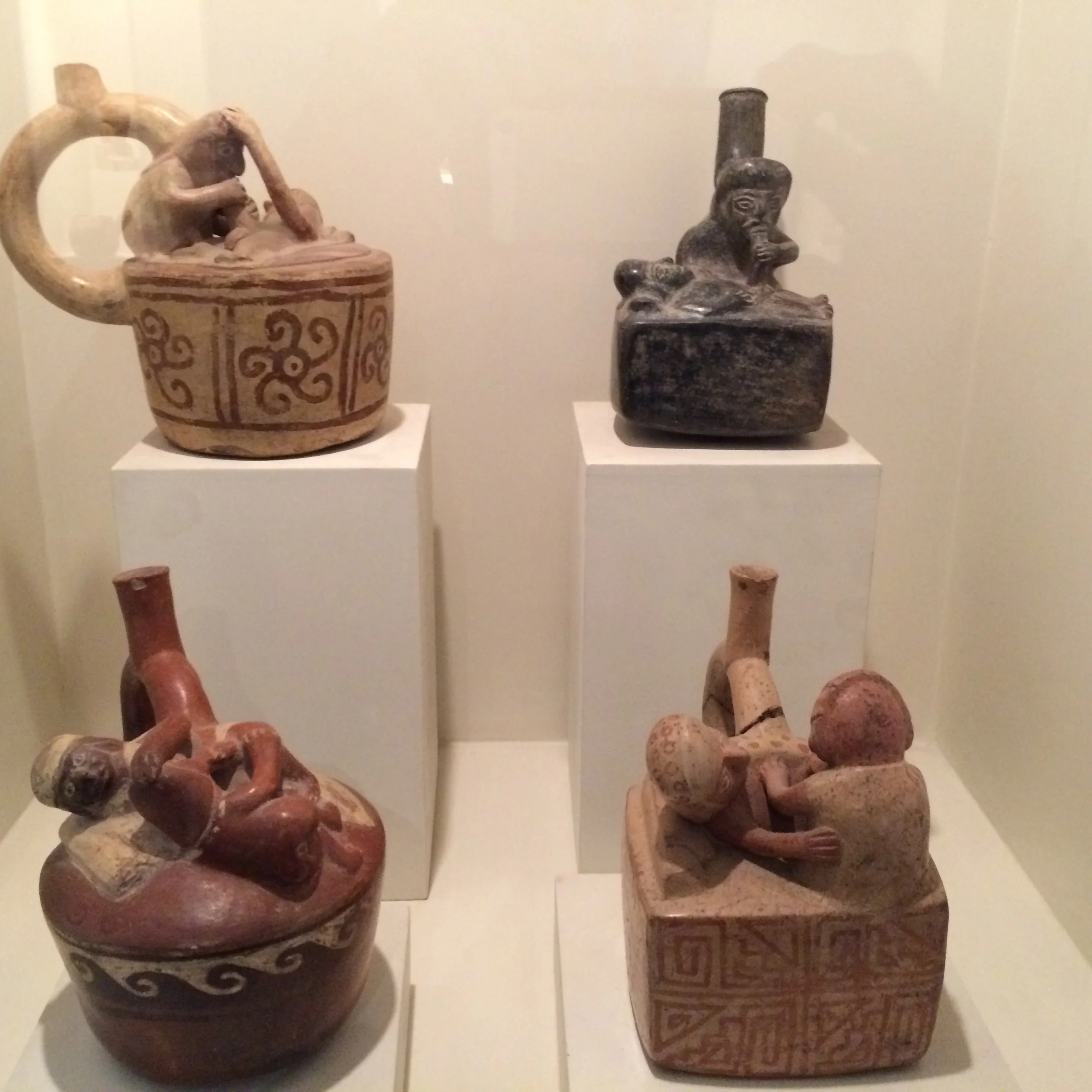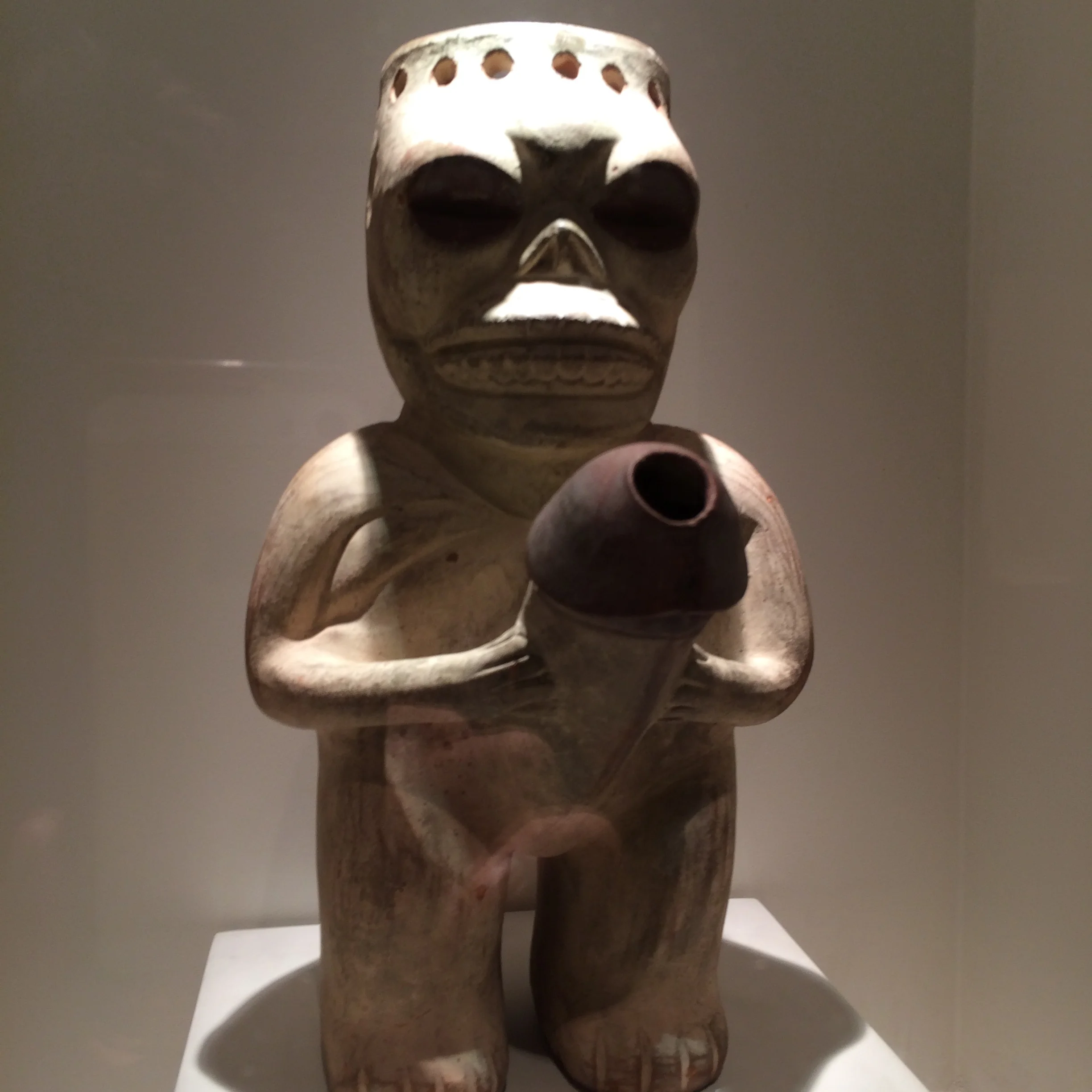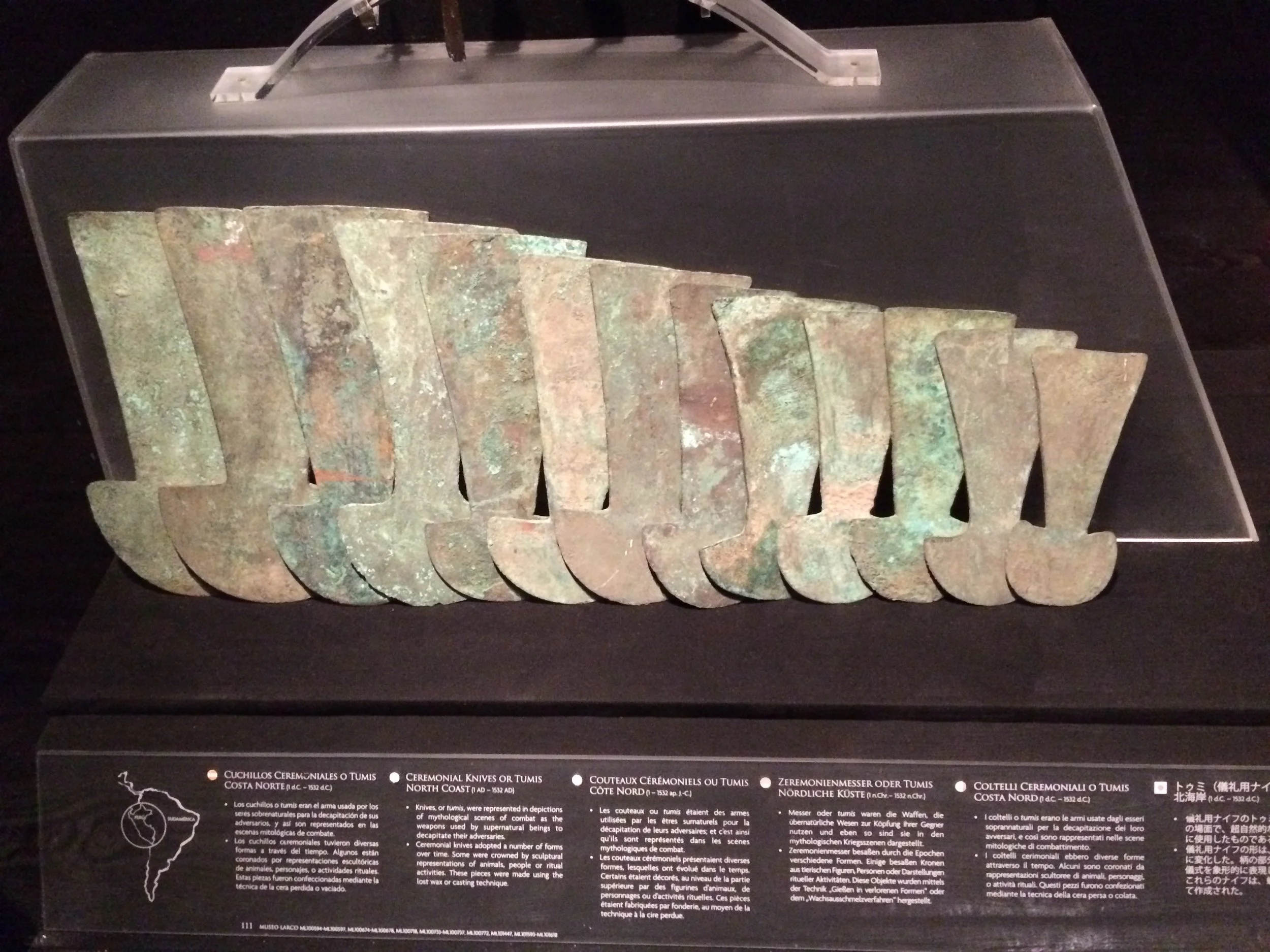We left our 3 day tour in the town of Ollantaytambo And checked into a hostel near the train station. This will be our base for three days, one day of rest, our full day at Machu Picchu and then an early morning return to Cusco. The hostel tuned out to be basic again but was clean, no bugs and Internet acces's. That evening we treated ourselves to a great dinner, at the train station which was rated the best restaurant in the town. We had a 5 star dinner complete with beverages and desert for $38.
We woke up early the next day for rest and preparing for the big Machu Picchu trip, the site is really picky about documents, you need paper pickets and your passport to enter. Going through all the documents I prepared before we left I discovered I had 4 copies of Frank's ticket and no Janet ticket Over the next few hours I went through several layers of panic and at one point dispair when I thought a actually had no ticket, Frank actually offered me his ticket (what a nice guy) After some breakfast and rational thought we found a way to access the system and reprint the tickets. After a quick walk to town to the local Internet cafe we had tickets. So much for our day of rest.
We woke at 4:00 and we were at the train station by 4:30 for the 5:00 train. This train is really more of a ride than a means of transportation it reminded us of Disney where getting to the ride is part of the fun.
The train takes you as far as the town of Aguas Calientes, here we needed to exit the train and take a bus, we found this confusing and by the time we purchased the tickets ($52 for A 20 minute ride) the line was down the street, not so much like Disney organization.
The line to get on the bus
when you purchase your tickets on-line you have several choices, one of these is a duel ticket for the traditional site and "Wayna Picchu" Only 400 tickets are issued each day for Wayna Picchu. The guild book describes this site as "it takes 40 to 90 minutes to scramble up the hill... For a spectacular view. Sounded good to us so we purchased the dual ticket.
Over the last several weeks we have encountered many other travelers that have already been to Machu Picchu, some of them also talked about the extremely hard climb they did to the top of the mountain. One group of 5 (younger than us) told us how is was so hard only one of them made it to the top. Frank and I were perplexed, could this be the dual ticket we bought to scramble up? That morning we both discussed it and made the decision to give it a try. So after getting to the site we found our way to the next entrance to the mountain. The ticket was date stamped to had to start the climb by 8:00 am. We made it at 7:56, signed in and started the climb. In the beginning it was OK about the same as our other climbs, then we got to the actual mountain and the trail became large steps at a 130 degree angle. It was hard, really hard, at one point we started meeting people on their way down and one guy told me that he was "near death " before reaching the summit. Well we were not near death but it took us 2 hours and lots of stops to catch our breath and it was spectacular
the gallery below shows our way up, Frank's Spartan pride, how we signed in and out of the mountain and the view from the top.
Now I will turn it over to Frank to talk about touring the traditional site.
This is actually the second time I am writing this portion of the blog. It was all done but our Mac Pro computer locked up, so we are trying to retrieve our thoughts if not in fact the original text to keep our friends happy. We are also having some problem with the photos. After scaling Wayna Picchu in about 2 hours and then coming down in about 1 hour we sought food and drink, and sought out a guide. Most photos show Wayna Picchu in the background hovering over theMachu Picchu site-we are very proud of the first photo of this section--we are at the peak of the mountain. We were so spiritually invigorated and uplifted by our successful trek. Janet teared up at the peak. Frank took photos of his father and sons. We hiked up 2700 meters altitude. We could not find a group to join so we hired a solo guide to see the temple site. Her name was Gracelia, and she had graduated from the University of Cuzco. She was of Inca ancestors and made our tour fantastic. One question we had was about the origin of the Inca. We knew that the Inca reign was relatively short; 500 years with 150 years in control of Peru, Ecaudor, Chile, and Columbia; whereas the Chimu, Moche, Nazcans of the coastal region survived for thousand of years. We had been told by other guides that the Inca was a merger of "scientific tribes" and warrior tribes, but they did not explain further and gave no details. We also knew of the folktales about the Inca brothers that Janet will describe elsewhere. When the question was directed to Gracelia, she brought out her map and pen and gave us a history lesson. She advised, or at least we understood, that the " Ticahaunaco" tribe of the Amazonian jungle portion of Peru, were the scientists/ engineers, who formed a treaty with the warrior tribe, the "Wari", (Hauri) of the Andean region. As these 2 tribes quietly grew and prospered together, the coastal residing Chimu, Moche, and Nizcans, thrived for thousands of year. Eventually the Inca gained a leader, the ninth leader--Pachacutec--who rallied the Inca army against an aggressive highland tribe, the Chankas, who were on the doorstep of Cuzco. This was 1438, and the victory buoyed the Inca expansion to come. Many Inca citadels were built, including Machu Picchu. But the Spanish have no chronical on Machu Picchu. Apart from the local tribe known as Quechuas, no one knew of MP until American historian Hiram Bingham came upon the thickly overgrown ruins in 1911. This gives rise as to what the purpose of this site was to be. The guide's position was that MP was a scientific site bringing together the brightest minds of the empire. The Inca assimilated rather than destroy the tribes they conquered. The quality of stonework and ornamentation also indicate that MP was an important ceremonial center; the circular stone turret comprising the Temple of the Sun, displays a large stone sun dial, and sits above the royal tomb. There are many other temples on site as well as residential sectors. The guide advised that MP was purposefully barricaded and hidden from the Spanish and left dormant until the 20th century. The site itself displays clever engineering and scientific projects and processes. The Inca protected the site by creating stepped up walls to stabilize the mountain slopes, to fight erosion, and to direct irrigation. MP like Moyà had experimental agricultural terraces. MP was recognized by an international engineering group for exceptional civil engineering. We hope these photos give you some insight as to the wonders and complexity of the site.
After visiting the costal and Andean regions of Peru we are now off to the Amazonian jungle.
Site view from train


















